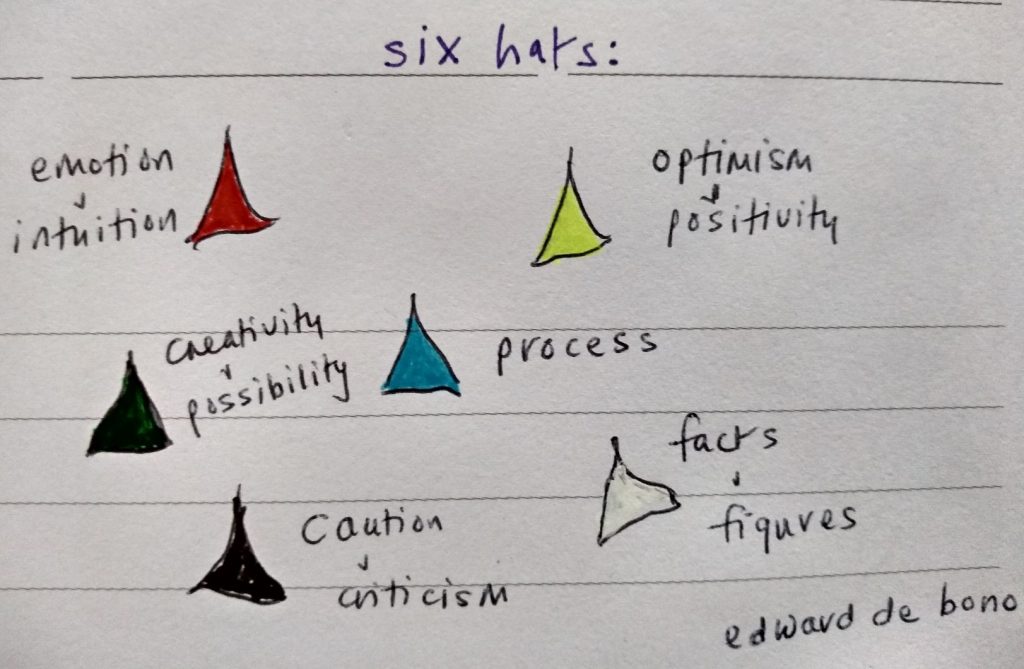In a recent middle way group discussing consequential ethics, we wondered how groups with diverse beliefs, ethics and approaches can work together to make effective decisions that account for a wide range of conditions, whilst at the same time avoiding conflict and argument?
Many thinkers have considered this problem and we might gain from looking at their ideas. One that came to my mind was Edward de Bono’s process of “Parallel thinking” which aims to enable groups to reach decisions as efficiently and effectively as possible, by considering the situation from several different perspectives and avoiding an adversarial framework.
For those unfamiliar with the idea, parallel thinking uses the metaphor of “six thinking hats” each of which represents a mode of thinking.

De Bono categorises the thinking modes as follows:
- Blue – Overview and process
- White – Information, facts and figures: What do we know, or need to know?
- Black – Caution and criticism: What are the risks we want to avoid?
- Yellow – Optimism and positivity
- Green – Creativity and possibilities
- Red – Emotion and intuition: What is our gut instinct?
To begin the process one person can take the role of facilitator – guiding the process – wearing the “blue hat”. The group then works together through each of the modes in turn, ensuring everyone is coming at the problem from the same direction (in parallel) at the same time. Hopefully, in this way, we might avoid an adversarial situation, where one person with a positive perspective on an idea might argue with someone with a negative view – often to little effect.
Individually, we can use this thinking process when seeking to integrate our our own judgements and actions in the context of complex conditions. We might consider “trying on the hats” to see which we habitually use. Then perhaps we could try on a hat we are less attracted to to gain a better perspective.
Here’s a short film explaining how the process can be used in practice:
Have you used this process in groups or individually?
What other thinking processes do you find useful in making judgements?
